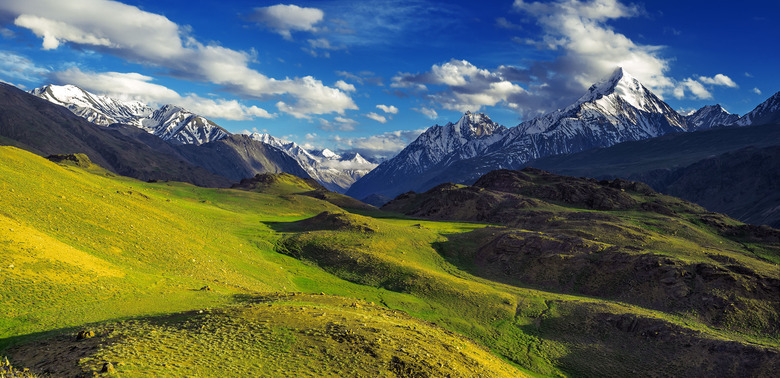Tectonic Collision May Be Ripping Tibet Apart
A massive collision between the Indian tectonic plate and the Eurasian tectonic plate is causing the Himalayas to grow, but new research suggests it might also be ripping Tibet apart.
According to new findings shared at the annual meeting of the American Geophysical Union, data shows that a collision between two major tectonic plates may be having some unforeseen consequences for Tibet. While we already knew that the Himalayas were growing, these new findings suggest that Tibet will be split apart in the process.
The truth is, scientists aren't exactly sure what is going on here. Some suggest that the bulk of the Indian tectonic plate is simply sliding under the Eurasian plate during the collision, without diving too deeply into the mantle. This is a process that we call underplating.
Others, though, believe that deeper portions of the Indian plate could be sliding under the other plate, which we call subducting. This could leave the upper portions of the plate wedged against Tibet. And, if the Indian plate is indeed subducting, it is possible that it is warping and tearing, too, causing the upper part to peel away completely.
A geodynamicist at Utrecht University told Science Magazine that "we didn't know continents could behave this way, and that is, for solid earth science, pretty fundamental." The fact is, this Indian tectonic plate collision could be doing more than ripping Tibet apart or causing the Himalayas to grow. It could be fundamentally changing what we know about plate tectonics and their collisions as a whole.
That's extremely intriguing, especially since these plate collisions can have such longstanding and far-reaching consequences. The researchers say they investigated earthquake waves traveling through the crust at the regions where the two plates are colliding, and then reconstructed images of those waves.
This showed them what appears to be a tear in the Indian plate's crust. In some places, the plate appeared to be 124 miles deep, while others were just 62 miles deep, suggesting some of the plate had peeled away during the tectonic collision. You can learn more about how tectonic plates change what Earth looks like in a video shared several years ago.
